GENERAL DATA
Plant parts: Resin, Extract, Root
Cultivation mode: Cultivated
In manufacturing: Licorice root extract is a very important flavouring agent and component at present in the confectionery and tobacco industries.
– Pharmaceutical industry.
– Food & Beverage Industry.
– Cosmetic Industry.
– Dietary Supplements.
In food: Candies. It is a flavoring agent in foods.
🌿 Industries That Use Licorice Root (Glycyrrhiza glabra L.)
Licorice root is a perennial legume native to parts of Europe and Asia. Its rhizomes and roots contain glycyrrhizin, a sweet compound that is 50× sweeter than sugar, along with flavonoids, saponins, and antioxidants. It has been used in Traditional Persian, Chinese, Ayurvedic, and European herbal medicine for centuries.
1. Pharmaceutical & Traditional Medicine Industry
Licorice root is one of the most prescribed herbs in both Western herbalism and Oriental medicine.
Applications:
-
Used for gastritis, ulcers, GERD, and cough relief
-
Included in liver support, hormonal balancing, and immune formulas
-
Supports adrenal function, anti-viral therapy, and detox regimens
✅ Forms: tinctures, decoctions, standardized extracts, syrups, tablets
2. Food & Beverage Industry
Licorice is valued both as a natural sweetener and for its distinct flavor profile in various consumables.
Applications:
-
Traditional licorice candies, toffees, and root beer flavoring
-
Added to herbal teas, digestive liqueurs, and flavored tobacco
-
Used as a sugar substitute in functional food products
✅ Natural source of sweetness without sugar (glycyrrhizin-based)
3. Herbal & Nutraceutical Industry
A staple in detox, respiratory, and adrenal support supplements and teas.
Applications:
-
Found in adaptogenic blends, lung-cleansing teas, and immune tonics
-
Paired with herbs like Ashwagandha, Ginseng, and Marshmallow
-
Often used as a flavor-enhancer in bitter herb formulations
✅ Considered a harmonizer herb in TCM (modulates intensity of other herbs)
4. Cosmetic & Personal Care Industry
Licorice extracts are used in natural skin brightening, anti-inflammatory, and soothing products.
Applications:
-
Serums and creams for hyperpigmentation, eczema, and sensitive skin
-
Included in scalp care, lip balms, eye creams, and after-sun gels
-
Helps with dark spots, redness, and skin irritation
✅ Contains glabridin and liquiritin, which inhibit melanin production
5. Tobacco & Flavoring Industry
Licorice root is used in flavored tobacco, hookah blends, and chewing tobacco formulations.
Applications:
-
Softens harshness of tobacco blends
-
Adds sweetness and depth in aromatic smoking products
-
Used in some herbal smoking alternatives
✅ Common in both Western and Middle Eastern tobacco processing
6. Veterinary & Animal Health
Used in natural animal supplements, especially for digestive and respiratory support.
Applications:
-
Included in herbal powders, pellets, or lick blocks for horses, cattle, and dogs
-
Helps with colic, cough, and immune challenges
✅ Offers palatability and natural detox support in feed
✅ Summary of Key Applications
| Industry | Common Uses |
|---|---|
| Pharmaceutical & Traditional | Ulcer relief, liver support, anti-viral, adrenal aid |
| Food & Beverage | Licorice sweets, root beer, herbal teas, sugar substitute |
| Herbal & Nutraceutical | Adaptogenic teas, lung cleansers, immune formulations |
| Cosmetic & Personal Care | Brightening serums, anti-inflammatory skincare |
| Tobacco & Flavoring | Flavored tobacco, hookah, sweetening agents |
| Veterinary & Animal Health | Respiratory & digestive supplements for animals |
🌟 Key Features
-
Contains glycyrrhizin, liquiritin, and glabridin with sweetening, anti-inflammatory, and antioxidant effects
-
Used in over 70% of traditional Chinese formulas as a balancing herb
-
Available as dried root slices, powders, syrups, extracts, and standardized capsules
-
Known for both its therapeutic versatility and commercial value
-
Excessive consumption may lead to pseudoaldosteronism (hypertension, edema), so dosing is essential
🌿 Industries That Use Black Licorice (Glycyrrhiza glabra L.)
Black Licorice refers to the traditional sweet preparation made from licorice root extract, combined with other ingredients such as molasses, flour, and anise oil. It is used both as a confection and a functional ingredient in pharma, tobacco, and flavoring systems.
It differs from raw licorice root or medicinal extracts by its refined, edible form and distinct aromatic flavor, combining sweet, earthy, and faintly bitter tones.
1. Confectionery & Food Industry
The primary industry using black licorice is the candy and confectionery sector, particularly in Europe, North America, and parts of the Middle East.
Applications:
-
Chewy black licorice candy sticks, ropes, and buttons
-
Used in traditional Nordic and Dutch sweets
-
Sometimes blended with salty ammonium chloride (salmiak licorice)
-
Featured in gourmet snacks, coated licorice bites, and sugar-free variants
✅ Known for its unique bitterness-sweetness balance and aromatic complexity
2. Pharmaceutical & Cough/Throat Relief Industry
Black licorice extract is incorporated into throat lozenges, syrups, and herbal cough remedies.
Applications:
-
Included in soothing lozenges and pastilles for sore throat
-
Used as a natural expectorant and demulcent in herbal syrups
-
Acts as a mucilage to coat irritated mucous membranes
✅ Often combined with Marshmallow root, honey, menthol, or eucalyptus
3. Flavoring & Beverage Industry
Though less dominant than the root extract, black licorice is used in flavor profiles for select drinks and specialty foods.
Applications:
-
Adds depth to root beer, ouzo, sambuca, and pastis
-
Flavors some bitters, aperitifs, and liqueurs
-
Included in spiced molasses cookies, anise-flavored cakes, and herbal blends
✅ Its anethole-rich profile makes it compatible with other aromatic botanicals
4. Tobacco & Herbal Smoking Products
Licorice extract (often in black licorice form) is used as a smoothing agent and flavor enhancer in the tobacco sector.
Applications:
-
Added to chewing tobacco, cigarette blends, and hookah molasses
-
Provides sweetness and moisture retention in herbal shisha blends
-
Used in herbal cigarettes as a natural base note
✅ Makes inhaled products less harsh and adds flavor complexity
5. Niche Markets & Cultural Use
Black licorice holds cultural and regional significance in traditional sweet-making and health folklore.
Applications:
-
Marketed as a digestive aid candy in Northern Europe
-
Used in natural remedy traditions as a gentle laxative or digestive sweet
-
Popular in seasonal gift packs and artisan candy production
✅ Especially favored in Scandinavia, Netherlands, Germany, and Iranian sweet shops
✅ Summary of Key Applications
| Industry | Common Uses |
|---|---|
| Confectionery & Food | Traditional licorice candies, chewy sweets, gourmet licorice |
| Pharmaceutical & Cough Relief | Lozenges, syrups, throat coatings, natural expectorants |
| Flavoring & Beverages | Root beer, anise liqueurs, herbal drinks, baked goods |
| Tobacco Products | Flavor additive, softening agent for smoking products |
| Cultural & Regional Use | Digestive treats, artisan candies, festive snacks |
🌟 Key Features
-
Derived from concentrated licorice root extract
-
Typically flavored with anise oil, molasses, and natural thickeners
-
Naturally sweet, earthy, and aromatically complex
-
Contains glycyrrhizin, which offers soothing and anti-inflammatory benefits
-
High consumption may impact blood pressure, so often regulated in pharmaceutical products
📊 Comparison Table: Black Licorice vs Raw Licorice Root
| Feature | Black Licorice | Raw Licorice Root |
|---|---|---|
| Botanical Source | Glycyrrhiza glabra extract (processed) | Glycyrrhiza glabra root (whole, dried or powdered) |
| Form | Refined extract blended with sweeteners (often molded into candy form) | Unprocessed dried root sticks, slices, or ground powder |
| Appearance | Dark black or brown, chewy texture | Yellowish-brown, woody or fibrous pieces |
| Flavor Profile | Sweet, earthy, with added anise/mint/mollasses | Mildly sweet, woody, slightly bitter |
| Sweetening Agent | Glycyrrhizin + added sugar or molasses | Natural glycyrrhizin only |
| Typical Use | Confectionery, flavored lozenges, liqueurs, some pharma | Herbal teas, tinctures, decoctions, traditional medicine |
| Industry Categories | Food (candy), beverages, pharmaceuticals, tobacco | Herbal medicine, nutraceuticals, cosmetics |
| Processing Level | Highly processed and flavored | Minimally processed (sun-dried or raw) |
| Therapeutic Strength | Mild — diluted in candy or flavoring formats | High — used directly in therapeutic formulas |
| Bioactive Compounds | Glycyrrhizin (in reduced amounts), anethole, sugar, excipients | Glycyrrhizin, liquiritin, glabridin, flavonoids |
| Medical Use | Soothing throat lozenges, mild expectorant | Treats ulcers, cough, adrenal fatigue, hormonal imbalance |
| Cultural Use | European & Middle Eastern sweets, festive treats | Used in Persian, Chinese, Ayurveda, and Unani traditions |
| Forms Available | Chews, twists, pastilles, extract sticks | Dried root, powdered root, tincture, extract capsules |
| Safety Notes | High intake can cause hypertension (especially if consumed frequently in candy form) | Potent herb; monitored in clinical herbal formulas for dosage limits |
| Shelf Stability | Long shelf life when sealed (up to 2 years) | Dried root lasts well (1–2 years); powder degrades faster |
| Market Position | Food-grade/licorice-flavored consumer product | Medicinal-grade or herbal raw material |
✅ Summary Notes
-
🍬 Black Licorice is a refined product used in confectionery and flavoring, often combining licorice extract + sugar + aromatics. It is less potent medicinally but highly popular culturally.
-
🌿 Raw Licorice Root is a therapeutic botanical used in traditional and herbal medicine, carrying the full spectrum of bioactives. It is more potent and versatile in natural health applications.
PRODUCT NAME IN DIFFERENT LANGUAGES
Persian Name: شیرین بیان/ Shirin Bayan
German Name (Deutschland, Austria, Switzerland): Süßholz, Lakritze
French Name (France, Belgium, Switzerland, Quebec): Bois doux, Bonbon à la réglisse, Réglisse glabre
HARVEST CALENDAR
Feb
Mar
Apr
May
Jun
Jul
Aug
Sep
Oct
Nov
Dec
To order Licorice root, please contact us.
About Glycyrrhiza Glabra
It is a plant of the Fabaceae family. It’s wild and herbaceous which grows in most areas and cities of Iran and is found in abundance in gardens on vineyards, next to walls and mountain slopes. The root of this plant sinks very deep into the ground and is wooden, its skin is brown to dark black and its root kernel is yellow with a sweet taste.
Glycyrrhiza Glabra Chemical Constituents
Glycyrrhizin, Anthoxanthin glycoside, Flavonoids, Enoxolone, Glycyrrhizic acid, Isoliquiritigenin, Liquiritoside.
Licorice Temperament
Hot and dry.
Licorice Health Benefits
Liquorice Root
1. Pour a tea spoon of its pulverized in a cup of warm water, then strain and drink it at night. Eliminates insomnia.
2. Seven days, in the morning, before breakfast peel it, smash it and boil it with Turnip seeds then strain and drink it. Or boil it with equal Strawberry leaves and drink it. Treats asthma or shortness of breath.
3. Dissolve Aleppo Oak Gallnuts (Quercus infectoria) in Licorice tea every morning before breakfast for 40 days, then strain and drink it, or 40 days in the morning before breakfast, boil it with equal amounts of Pomegranate root and drink its strained tea. Eliminates the fungus inside the stomach.
4. Smash half a kilo of it after peeling and soak it in 2 liters of water for 5 hours, then boil it until the water becomes half, then strain the water and dissolve 75 grams of Astragalus Manna in it and again strain and drink two cups of it every morning before breakfast. Heals stomach ulcers.
5. Mix its tea with potato decoction and drink it. Removes bladder stones and treats urinary retention.
6. Peel 40 to 50 grams of it, cut it into pieces and boil it in a liter of water for 10 minutes, then brew for 12 minutes and drink a cup of strained water every morning and evening. Relieves bladder pain, relieves cough, relieves hoarseness, calms nerves, relieves old and moisture fevers, brightens eyes and enhances eyesight, relieves constipation, prevents stomach cramps and facilitates digestion, treats bronchitis, pneumonia and pertussis, relieves chronic headaches.
7. If you gargle its pith decoction in the throat 3 times a day, it will cure angina.
8. If you peel 200 grams of it and boil it in a liter of water for 20 minutes, then brew it for 15 minutes and rinse the eyes with its rinsed water, it will remove the redness of the eyes, and if you rinse your mouth with it, relieves dry mouth and treats bleeding gums.
Licorice Side Effects
Its root slows down smooth muscles function and raises blood pressure.
Black Liquorice
1. Rub dried black licorice powder in the eyes. Removes yellowing of the eyes and white spots on the eyes.
2. Poultice it on the body part. Treats arthritis that is associated with pain, improves bruising and trauma to the limb.
To order Black Licorice, please contact us.

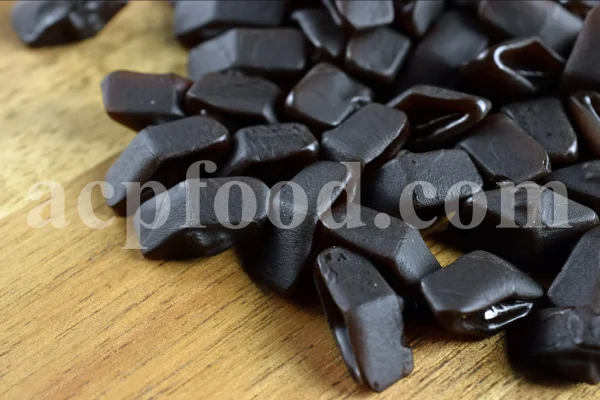
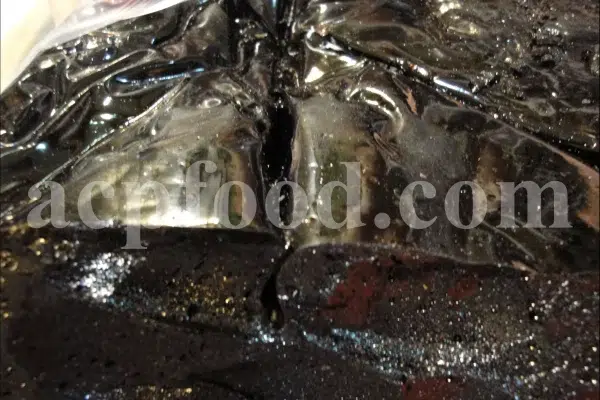
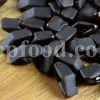

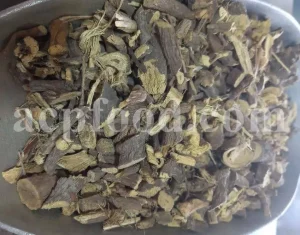
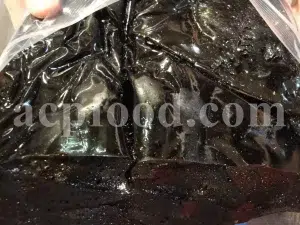
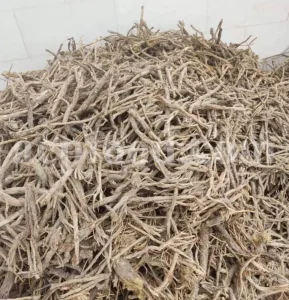
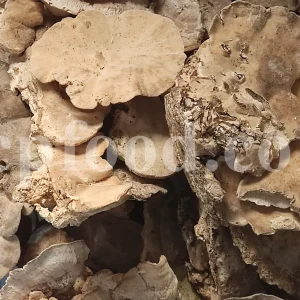
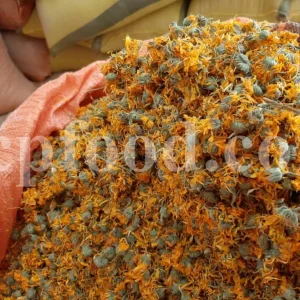
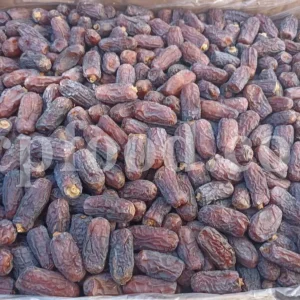
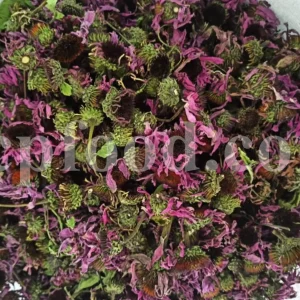
Reviews
There are no reviews yet.